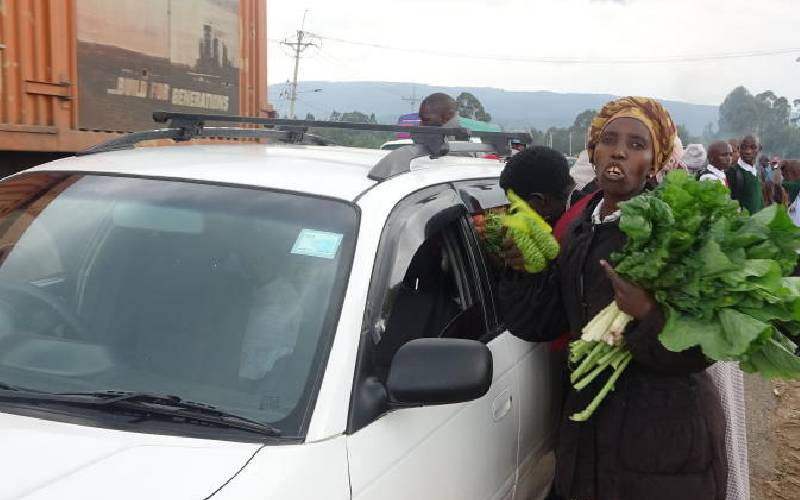
It was like a horror movie. Fifty-one ordinary citizens died last week when a lorry hit them as they went on with their business by the roadside in Londiani.
It is common at Kangemi and many other regions in Kenya for traders to sell foodstuffs and merchandise by the roadside.
When I visited Canada last week, I noted many signs of “farmers’ markets.” Why can’t we have such markets away from highways?
Let’s give credit where due; the Jubilee government did build some farmers’ markets like Soko Mpya near Flyover (the funniest name of a town). It not far from Soko Mjinga!
One quick solution to the Londiani tragedy is to build farmers’ markets away from the road. The second solution is to buy directly from the farmers and save them transport costs.
It’s curious that the government tried to remove the traders unsuccessfully. For most of them, it’s their only source of livelihood and they are willing to risk their lives. Unless the economy grows fast enough to absorb such traders into alternative jobs, they are there to stay. I doubt if any of these traders are very proud of that work. We must accept rightly that Kenya is the land of hustlers. And despite the politics around it, hustling will not end soon.
Let’s focus on accidents. Transport Cabinet Secretary Kipchumba Murkomen offered a technological solution to such accidents - dashboards cameras, which record what happens in front of the driver.
That could be used in court but may not prevent accidents. Did speed governors stop accidents? Watching over drivers will not stop accidents. How could a dashboard camera have prevented that accident? The key solution would be technology-based and our behaviour. Let’s start with technology. How many of the spare parts sold in our market are fake? Have authorities investigated if the lorry brakes at Londiani were genuine?
Most car manuals specify when a part should be replaced, say after 100,000km. The car does not stop if it’s not replaced. But one day the part will fail. Think of the fan belt failing at high speed.
The dashboard or speed governor can’t capture what’s below the bonnet or on the chassis. A good maintenance record would get the root cause of the accident. Why do we conclude it’s brakes and not other parts?
Suppose the gears failed to shift to a slower speed and put strain on the brakes. We need to learn from the TV programme Air Crash Investigation, how they get the root cause of car accidents. Most car parts in Kenya are manufactured elsewhere and quality control is overlooked. Our material testing could ensure that only genuine parts are sold in Kenya. How many automotive engineers do we have in Kenya to test our vehicles? How many are employed by the police department?
We can’t rule out behaviour in accidents. Truth be told, most of us started driving cars as adults. We are still fascinated by speed.
And in driving schools, the mechanical system remains a black box. What if we shed light on this black box in driving schools?
Remember also science was not a cup of tea for many students. We end up focusing on the prestige part of the car, not its utility.
And police focus on the stickers, not the mechanical soundness of the vehicles. We import second-hand cars, used for up to eight years. Would new cars be safer, though pricier? Why do we forget that even without roadside markets, our roads are prone to accidents? Why does someone cut square holes in the road and leave them open?
Why are there no rest places on most major roads except at Delamere’s in Naivasha on the Nairobi-Nakuru Highway?
To reduce accidents, we must see cars as tools like hoes or knives. We must look at the whole accident ecosystem - the technology used to make car parts, the road design, the drivers, the regulations and the role of the police on the road.
It’s the police cars that should have dashboard cameras to record what we transact with them. Matatus drivers know better.
Would insurance reduce accidents by penalising those who cause accidents but first determining their real cause? After all, no driver wants to die. Weather is also a factor. Think of the fog on Nairobi-Naivasha Road. Who warns us? We can’t be accident-free. Even technology has its limits. But changing our behaviour and putting more emphasis on technology soundness would save lives. My heartfelt condolences to the families that lost their loved ones in the Londiani accident.